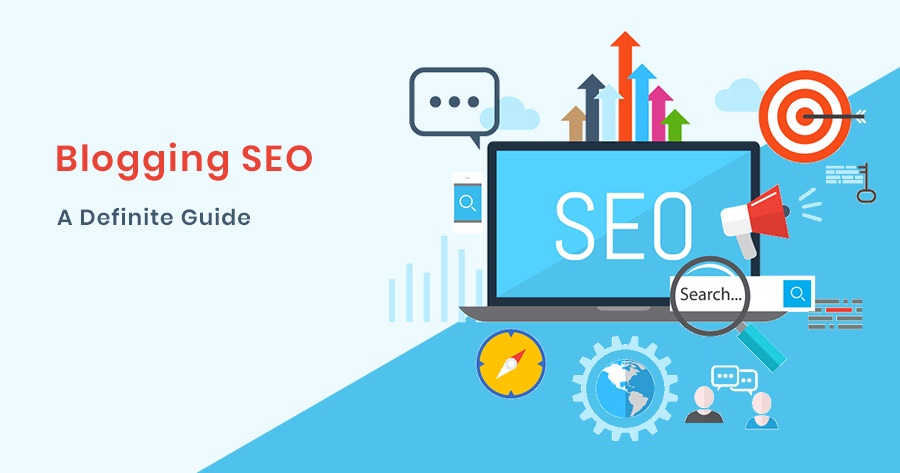How to SEO Blog?

Before starting Search Engine Optimization (SEO) of your website or blog, it is important to understand the process involved in an effective SEO campaign. In this blog, we have easily explained to you how you can do SEO of your blog well – Blog Ka SEO Kaise Kare in Hindi?
The SEO process does not end after performing a few steps. To achieve continued success, it is important to monitor results and produce meaningful content on an ongoing basis.
Many people also ask this question how to do On-Page SEO of a website or blog? So do not worry because you are going to get information about all these further.
Steps and Processes for Successful Blog SEO:
- Keywords Research
- content creation
- On-Page Optimization
- Off-Page Optimization
- Technical SEO
How to SEO Blog?
1) Research
In Research you have to do 2 types of research 1) Keyword Research 2) Competitor Research
Keyword Research – Keyword Research
You do SEO of the blog so that it can be ranked in Google, so first of all you have to identify all the keywords that people search on Google, so Keyword Research is an important process.
Keyword research involves identifying a group of keyword phrases, keywords are words that the user searches on the search engine to answer the questions related to it. This initial step is important, in this you have to research other keywords along with the main keyword.
What is Keyword and Keyword Research?
You can list multiple keywords using Google Keyword Planner.
If your blog is new then do long keyword research because it is easy to rank on it.
For example, let's say you own a business that rents apartments in a particular metropolitan area, the "Big City." Your apartments are only in one metro area, so you're not going to choose common words like "apartment" for ranking. You're only interested in searchers looking for an apartment in your city, so you'll only be targeting visitors who search for "large city apartments".
Competitive Research – Competitor Research
Once you've done the target keyword research, you should now do a thorough competitor analysis against your biggest competitors (using both offline and online competitors).
Use a range of SEO metrics that include Indexed Content, Alexa Rating, Inbound Links, Domain Age, and Social Media to compare them all with your competitors.
2) Create Quality Content
Content is the king of SEO. Search engines like Text, Image, & Video; Creating high volume, high-quality content related to your blog & business is of paramount importance.
Quality content means giving new information to the visitor and what he wants to find, he should get the answer on your blog or website.
If you have high-quality content on your blog or website, then visitors stay on your blog for a long time and this increases the Dwell Time of your blog and improves SEO.
3) On-Page SEO
After adding new, high-quality content writing, now you have to do On Page Optimization.
Any improvement you make on your blog or website for the optimization of your website or blog is called On-Page SEO.
Improving On-Page SEO increases the ranking of your blog.
To do On-Page SEO in a good way, follow the things mentioned below.
Blog Title
Make sure that the main keywords are present in the title of your blog. Ranking will be difficult if the main keywords of your blog are not present in the title of the blog.
Use keywords in the content
Writing Main Keywords in the middle of the first paragraph of the blog increases the chances of ranking because it gives Google an understanding of what your blog is about.
Also, using large font sizes and making text bold can emphasize its importance and positively affect a page's ranking for that keyword.
Use a Sitemap
Create a sitemap that includes links to all the important pages on your site in a well-organized list and a text link to the site map on your home page.
Sitemap correctly builds the structure of your blog or website, so that Google's bot can understand the structure of your blog well.
If your blog is in WordPress, then you just have to install the Yoast SEO plugin, it automatically makes the sitemap of your blog.
Write Meta Description
If you have the Yoast SEO plugin in your blog or website, then using it you can add a description of up to 160 characters to your blog or article which appears in SERP and tells what your blog is about.
Do Internal And External Linking
Internal Linking means giving a link to your other blog in one of your blogs and External Linking means giving a link to an external website in your blog.
If you want to increase the SEO score of your blog or website and want to rank on Google, then definitely use internal and external links in your blog.
Optimize URL
With the above domain, the address of your blog is called a URL. Google does not like very long URLs, so keep the URL short and include the main keywords of the blog.






